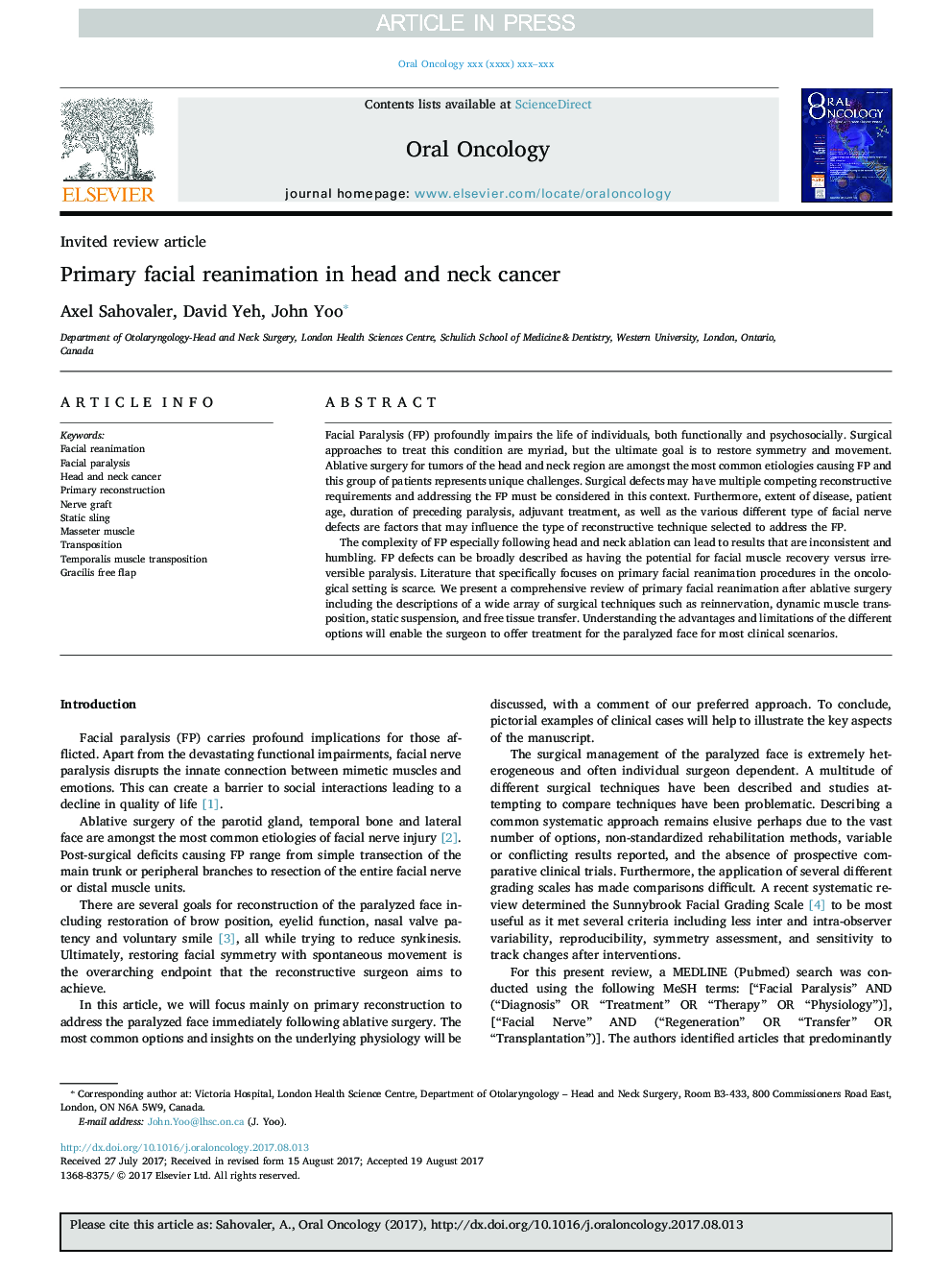| Article ID | Journal | Published Year | Pages | File Type |
|---|---|---|---|---|
| 8707530 | Oral Oncology | 2017 | 10 Pages |
Abstract
The complexity of FP especially following head and neck ablation can lead to results that are inconsistent and humbling. FP defects can be broadly described as having the potential for facial muscle recovery versus irreversible paralysis. Literature that specifically focuses on primary facial reanimation procedures in the oncological setting is scarce. We present a comprehensive review of primary facial reanimation after ablative surgery including the descriptions of a wide array of surgical techniques such as reinnervation, dynamic muscle transposition, static suspension, and free tissue transfer. Understanding the advantages and limitations of the different options will enable the surgeon to offer treatment for the paralyzed face for most clinical scenarios.
Keywords
Related Topics
Health Sciences
Medicine and Dentistry
Dentistry, Oral Surgery and Medicine
Authors
Axel Sahovaler, David Yeh, John Yoo,
